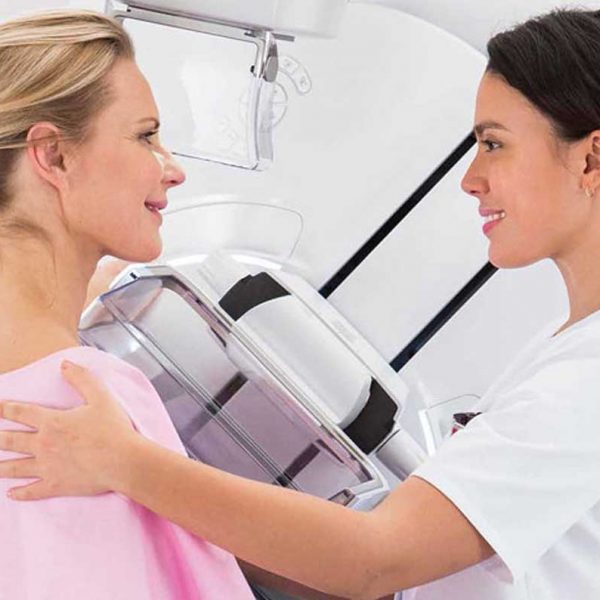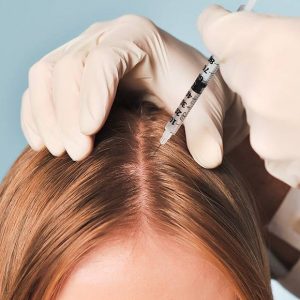| Content | Today, we cannot talk about that only women prefer face lift operations, which are commonly performed for aesthetic concerns. Face lift procedures, which are also very popular among men of our age, are mostly preferred to recover skin loosening and sagging on the face after a certain age. It is not quite right to talk about an age restriction for facelift procedures, because it is sufficient for the person to feel his own face aged and to detect that the face has lost its dynamics as a result of the examination. |
Vaginoplasty
Vaginoplasty is a procedure to repair the vagina. It treats a variety of medical issues, including vaginal enlargements from childbirth and complications of pelvic floor disease.
What is done during vaginoplasty?
The details of the procedure vary depending on your goals and medical needs. The vagina is reconstructed using various surgical techniques.
Who needs vaginoplasty?
- - Those seeking removal of postpartum enlargement or trauma damage to improve sexual function.
- - Women who need vaginal reconstruction after vaginal exposure to radiation or excision to treat cancer or other conditions.
- - Women who have congenital abnormalities (problems from birth) that affect the development of the vagina.
What is the difference between vaginoplasty and other vaginal operations?
- Vaginoplasty is a surgical procedure to improve the appearance or function of the vagina.Other vaginal procedures:
- - Labiaplasty operation that equalizes or shrinks the labia.
- - A vulvoplasty operation that reshapes the outer part of the vagina.
What is done before vaginoplasty?
- Before the surgery decision, your doctor will perform your physical examination to evaluate your suitability for the operation. During this physical examination, you are expected to provide information about your medical history and general health status.Your doctor will inform you about the risks, benefits and post-operative care requirements of the operation. Listening to your doctor's suggestions and recommendations will reduce the risk of complications.
What is the content of the procedure in women with postpartum deformation?
- In operations performed to correct deformations occurring during childbirth
- - Excess skin is removed,
- - Distorted anatomical lines are repaired,
- - It is ensured that the vaginal opening is reduced.
What is the content of vaginoplasty to repair congenital (birth) defects?
-
- - A functional vagina can be created.
- - Excess tissue or abnormal structures are removed.
- - The structures that cause blood to accumulate in the vagina during menstruation are repaired.
Risks / Benefits
-
- Possible risks of vaginoplasty surgery:
- - Dyspareunia (painful intercourse).
- - It can be summarized as numbness or loss of sensation (usually temporary).
In contrast, the benefits after surgery are:
- - There will be increased sexual satisfaction and self-confidence.
What is the recovery process like after vaginoplasty?
-
- Recovery can take from a few weeks to several months, depending on the extent of the surgery. Your doctor and team will provide you with all the necessary information about post-operative care after vaginoplasty.
How are the controls planned after vaginoplasty?
-
- Keeping in touch with your doctor after the surgery and not interrupting your controls will speed up your recovery process and minimize the risk of complications.
|
Breast Health Package for Women Under 40
Our Breast Health Center, which is a part of Yaşam Hospital Oncology Center, offers all the possibilities of technology to provide the best care to every woman.
Early Detection of Breast Cancer
Breast cancer is the most common type of cancer that women can encounter in their lifetime (Early detection can save your life).
Self Examination
From the age of 20, all women should perform a breast self-exam once a month (about one week after the start of each menstrual period). If you feel an unusual lump or anything else, it’s important to contact your doctor right away.
What is Breast Ultrasound?
Ultrasound is an imaging method that uses high-frequency sound waves to take pictures of internal organs and tissues.
When Should Breast Ultrasound Be Done?
From the age of 25, annual routine ultrasound follow-ups should not be interrupted. Ultrasound can be applied safely as it does not contain radiation and has no side effects on the body.
What Are the Risks of Breast Ultrasound?
Breast ultrasound uses sound waves, not radiation, to produce images. Ultrasound technology has no known risks.
What Happens After Breast Ultrasound?
After your breast ultrasound, the radiologist interprets the images and reports the results to your doctor. This information will also be shared with you if any additional testing is needed or follow-up is recommended.
What are the Benefits of Breast Ultrasound?
Ultrasound scanning is non-invasive (no needles or injections).
Ultrasound imaging is extremely safe and uses no radiation.
An ultrasound scan gives a clear picture of soft tissues that don’t show up well on x-ray images.
Ultrasound provides real-time imaging. This makes it easy to guide minimally invasive procedures such as needle biopsies and fluid aspiration.
Ultrasound imaging helps detect lesions in women with dense breasts.
Ultrasound can help detect and classify a breast lesion that cannot be adequately interpreted by mammography alone.
Using ultrasound, doctors can determine that many areas are caused by normal tissue (such as fat lobules) or benign cysts. For most women age 40 and older, a mammogram will be used along with the ultrasound. For women under the age of 40, ultrasound alone is often sufficient to determine whether an area of concern needs a biopsy.
What Does the Breast Health Package Consist of?
Breast health package consists of General Surgery Examination and Breast USG.
Note from your doctor:
Breast ultrasound is a safe, painless imaging method for examining targeted areas of breast tissue. With breast ultrasound, we provide detailed images of breast tissue and can diagnose cysts or lumps if present. Diagnosing possible risks at an early stage provides a very important gain in the treatment process. |
What is neural therapy?
Neural therapy is a regulation treatment performed by administering local anesthetics to certain parts of the body.
What is the neural therapy mechanism of action?
Neural therapy application is based on the regulation of our spontaneous (autonomous) nervous system. The drug used is not cortisone. It is one of the drugs called local anesthetics, which dentists also use to numb the teeth. These drugs are used by diluting them with liquids called physiological saline.
Who is neural therapy applied to?
Neural therapy can be applied to patients of all ages. Diseases such as blood pressure, diabetes, heart disease do not prevent treatment. Care should be taken in deep injections in patients who only use blood thinners.
What ailments is neural therapy good for?
- - Headaches
- - Regional Musculoskeletal Pain
- - Fibromyalgia Syndrome
- - Chronic Pelvic Pain
- - Waist-Neck-Back Pain And Hernias
- - Spinal Calcifications
- - Chronic İnflammations
- - Carpal Tunnel Syndrome
- - Chronic Pain İn The Elbows
- - Knee And Shoulder Pain
- - Tendinitis
- - Sports İnjuries
are the main ailments that can benefit from the application.
Who is neural therapy not applied to?
Neural therapy is not applied in patients with known local anesthetic allergies, cancer patients and pregnant women.
Is neural therapy application painful?
The most commonly used technique for neural therapy is intradermal and subcutaneous applications with mesotherapy needles. Slight pain may be felt during the application, but since the drug given is a local anesthetic, the pain disappears immediately. Persistent and long-term unbearable pain does not occur.
How many sessions of neural therapy are done?
Although it varies according to the patient, treatment is started once or twice a week in the beginning. Follow-up applications are usually done once a week. It is necessary to put at least 48-72 hours between sessions. The total session is related to the patient’s condition. Usually, 6 sessions are sufficient.
Doctor’s Note:
Neural therapy, which has a wide area of use and does not have any serious side effects, is a safe form of treatment for the mentioned diseases that can be answered in a short time. |
| OVERALL CARDIOLOGY SCREENING PACKAGE |
| LABORATORY ANALYSIS
|
| Glucose |
To determine whether or not your blood glucose level is within normal ranges; to screen for, diagnose, and monitor diabetes, and to monitor for the presence of hypoglycaemia (low blood glucose) and hyperglycaemia (high blood glucose) |
| HbA1c |
To monitor average blood glucose levels over a 3 month period. Used to help diagnose and monitor people with diabetes. |
| Urea (Bun) |
To measure how much of waste product you have in your blood. It is used to determine how well your kidneys are working |
| Creatinine |
To assess kidney functions |
| Uric Acid |
To diagnose kidney disorder,diagnose and monitor people with gout, monitor kidney function. |
| Complete Urinalysis Test |
To look for metabolic and/or kidney disorders and for urinary tract infections |
| Total Cholesterol |
To screen for risk of developing cardiovascular disease (heart disease, stroke and related diseases); to monitor treatment |
| LDL Cholesterol |
| HDL Cholesterol |
| Triglycerides |
| AST (SGOT) |
To diagnose liver, bile duct and heart diseases. |
| ALT (SGPT) |
| Sodium |
To investigate causes of dehydration, oedema, problems with blood pressure, or non-specific symptoms |
| Potassium |
To help diagnose and determine the cause of an electrolyte imbalance; to monitor treatment for illnesses that can cause abnormal potassium levels in the body |
| Calcium |
To scan, diagnose, and monitor a range of conditions relating to the bones, heart, nerves, kidneys, and teeth |
| C-Reactive Protein (CRP) |
To identify the presence of inflammation, to determine its severity, and to monitor response to treatment |
| 25 Hydroxy Vitamin D |
To investigate a problem related to bone metabolism or parathyroid function, possible vitamin D deficiency, malabsorption, before commencing specific bone treatment and to monitor some patients taking vitamin D |
| Homocysteine |
To find out if you are at high risk of a heart attack or stroke; also used to determine if you are folate-deficient or vitamin B12-deficient |
| Lipoprotein A |
To evaluate targeted screening for cardiovascular disease (coronary artery disease (CAD) and cerebrovascular disease) risk assessment |
| Blood Count Haemogram |
Haemogram serves as broad screening panel that checks for the presence of any diseases and infections in the body. |
| Troponin |
To see if you have had a heart attack or damage to your heart muscle |
| Vitamin B12 |
To help diagnose the cause of anaemia or neuropathy (nerve damage), to evaluate nutritional status in some patients, to monitor effectiveness of treatment of B12 or folate deficiency |
| Free T3 |
To help diagnose hyperthyroidism and monitor it's treatment |
| Free T4 |
To diagnose hypothyroidism or hyperthyroidism in adults and to monitor response to treatment |
| TSH |
To screen for and diagnose thyroid disorders; to monitor treatment of hypothyroidism and hyperthyroidism |
| D- dimer |
To help diagnose or exclude thrombotic (blood clot producing) or bleeding diseases and conditions |
| OTHER ANALYSIS |
| Carotid Ultrasound |
To detect narrowing, or stenosis, of the carotid artery, a condition that substantially increases the risk of stroke |
| Echocardiogram |
To evaluate how your heart moves, heart valves are working and heart’s pumping strength |
| Electrocardiogram |
To measure the electrical activity of the heartbeat and hearth rhythm |
| Coronary CT Angiography |
It is a imaging method performed by computed tomography of the coronary arteries, which are the vessels that feed the heart, by giving contrast material through the vein of the forearm |
| EXAMINATIONS |
| Cardiology Examination |
General physical examination, evaluation of the results and recommendations |
| General Surgery Examination |
| Dermatology Examination |
| OTHER ANALYSIS |
| Carotid Ultrasound |
To detect narrowing, or stenosis, of the carotid artery, a condition that substantially increases the risk of stroke |
| Echocardiogram |
To evaluate how your heart moves, heart valves are working and heart’s pumping strength |
| Electrocardiogram |
To measure the electrical activity of the heartbeat and hearth rhythm |
| Coronary CT Angiography |
It is a imaging method performed by computed tomography of the coronary arteries, which are the vessels that feed the heart, by giving contrast material through the vein of the forearm |
| EXAMINATIONS |
| Cardiology Examination |
General physical examination, evaluation of the results and recommendations |
| General Surgery Examination |
| Dermatology Examination |
|
Breast Health Package for Women Over 40
Our Breast Health Center, which is a part of Yaşam Hospital Oncology Center, offers all the possibilities of technology to provide the best care to every woman.
What is Mammography?
Mammography is the low-dose X-ray imaging of the breast tissue to look for early signs of breast cancer before symptoms develop. It can also be used for due diligence when a new symptom (lump or focal pain) develops in the breast tissue.
When viewed on a mammogram, breast tissue appears white and opaque (nebula), while fatty tissue appears darker and translucent.
When Should a Mammogram Be Done?
Annual screening mammograms are recommended for all women from the age of 40. Women who do not have any breast-related signs or symptoms are also screened. If an abnormality is present or patients have a new symptom (a lump or focal pain), additional evaluation may be required. Further examination will reveal what these suspected abnormalities are.
What Percent of Women Who Have Had Mammography Have Risky Situations?
Potential abnormalities are found in 6 to 8 percent of women who get mammograms. This group undergoes different additional evaluations, which may include breast physical examination, diagnostic mammography, breast ultrasound or needle biopsy.After these additional evaluations are completed, it becomes clear what the abnormalities found on the mammogram are.
What Does an Abnormality Look Like on a Mammogram?
The possible abnormality on a mammogram may be called a nodule, mass, lump, density or deterioration:
A mass (lump) with a smooth, well-defined border is usually benign.
Ultrasound is necessary to see and identify the inside of a mass. If the mass contains fluid, it is called a cyst.
A mass (lump) with irregular borders or a starburst appearance may be cancerous and a biopsy is usually recommended.
Microcalcifications (small calcium deposits) are another type of abnormality. They can be classified as benign, suspicious, or uncertain. Most microcalcifications are benign. Depending on how the microcalcifications appear in additional studies (magnification views), a biopsy may be recommended.
What is the Accuracy Rate of Mammography?
Diagnoses made by mammography are between 85 percent and 90 percent accurate. Mammograms can detect breast abnormalities before they are large enough to be felt. However, a palpable mass may not be seen on a mammogram. Any abnormality you feel while examining your breasts should be evaluated by your doctor.
What Should Be Considered Before Mammography?
You can follow your normal routine before the mammogram. You can take your medications and maintain your eating and drinking patterns. If you are breastfeeding, pregnant or think you may be pregnant, you should tell your doctor as your mammogram may need to be postponed.
What Should I Pay Attention to When Coming to My Mammography Appointment?
The technician will ask you to remove one breast from your bib at a time and place it on the chest support plate. The image of the breast is taken by clamping it between two plates. In the meantime, pressure is applied to the breast, preventing the breast from moving. This pressure spreads the breast tissue, allowing the radiologist to see the tissue better. Also, the least amount of radiation is used when the breast is compressed as finely as possible.
You may feel some discomfort during 3-5 seconds of pressure. If you cannot tolerate the pressure, please let the technician know. Pressure can be more bothersome at some times in a woman’s menstrual cycle. To minimize discomfort, we recommend scheduling your appointment seven to 10 days after the start of your period.
How is a Mammogram Taken?
The technician will ask you to remove one breast from your bib at a time and place it on the chest support plate. The image of the breast is taken by clamping it between two plates. In the meantime, pressure is applied to the breast, preventing the breast from moving. This pressure spreads the breast tissue, allowing the radiologist to see the tissue better. Also, the least amount of radiation is used when the breast is compressed as finely as possible.
You may feel some discomfort during 3-5 seconds of pressure. If you cannot tolerate the pressure, please let the technician know. Pressure can be more bothersome at some times in a woman’s menstrual cycle. To minimize discomfort, we recommend scheduling your appointment seven to 10 days after the start of your period.
How Does the Process Proceed After Mammography?
There may be temporary skin discoloration and/or mild pain in the chest due to compression. Most women will be able to resume their normal activities soon after their mammogram. Your results will be available within a few days after the test. After getting the results, your doctor will explain everything to you.
How Often Should You Have a Mammogram?
Regular mammograms every year, starting at the age of 40, will enable you to recognize potential risks early.
What Does the Breast Health Package Consist of?
Breast health package consists of General Surgery Examination and Mammography |
| Additional information | |
| Select Hospital |
Antalya Yaşam Hospital, Kemer Yaşam Hospital, ASV Yaşam Hospital, Opera Yaşam Hospital, Alanya Yaşam Hospital, Manavgat Yaşam Hospital
|
|
| Select Hospital |
Antalya Yaşam Hospital, Kemer Yaşam Hospital, ASV Yaşam Hospital, Opera Yaşam Hospital, Alanya Yaşam Hospital, Manavgat Yaşam Hospital
|
|
| Select Hospital |
Antalya Yaşam Hospital, Kemer Yaşam Hospital, ASV Yaşam Hospital, Opera Yaşam Hospital, Alanya Yaşam Hospital, Manavgat Yaşam Hospital
|
|
| Select Hospital |
Antalya Yaşam Hospital, Kemer Yaşam Hospital, ASV Yaşam Hospital, Opera Yaşam Hospital, Alanya Yaşam Hospital, Manavgat Yaşam Hospital
|
|
| Select Hospital |
Antalya Yaşam Hospital, Kemer Yaşam Hospital, ASV Yaşam Hospital, Opera Yaşam Hospital, Alanya Yaşam Hospital, Manavgat Yaşam Hospital
|
|

























Reviews
There are no reviews yet.